A college education -- even at a top private college or university -- doesn't have to cost you an arm and a leg. Here are ten private schools from Kiplinger's 100 Best Values in Private Colleges and Universities where the net price tag per student -- the annual cost (tuition, fees, room and board, and books) to students after financial aid -- is $20,000 a year or less.
Seven of the ten offer a net price that's well below the average annual price (about $17,000) of a public in-state education.
[More from Kiplinger: 10 Best Values in Public Colleges 2012]
These schools share a commitment to making college affordable, but they also represent private education in all its variety. The list includes two Ivy League schools, four with a religious orientation, two with fewer than 600 undergraduates and one that trumps all the others for the remarkable deal it offers every student: free tuition for all four years. Take a look.
1. Berea College
Location: Berea, Ky.
Undergraduate enrollment: 1,661
Total cost: $7,646 (for room and board, fees and textbooks)
Average need-based aid: free tuition plus $5,005
Average net cost: $2,641
Kiplinger's rank: #98 among liberal-arts colleges
This school stands out not only for the generosity of its financial-aid program but also for its commitment to providing a college education to students with need. Berea admits only students who qualify for need-based aid; every student receives a full tuition scholarship worth almost $100,000 over four years. Students are also eligible for other grants or scholarships, bringing the total annual net price of this four-year residential college below the average annual cost of a two-year public college.
2. Brigham Young University
Location: Provo, Utah
Undergraduate enrollment:30,684
Total cost: $17,552 (non-Mormon); $12,842 (Mormon)
Avg. need-based aid: $5,333
Avg. net cost: $12,219 (non-Mormon); $7,509 (Mormon)
Kiplinger's rank: #34 among private universities
Sponsored by the Church of Jesus Christ of Latter-day Saints, Brigham Young gives a price break to Mormons but makes no distinction between Mormons and non-Mormons when it comes to its financial aid awards. And its sticker price -- the second-lowest, after Berea College, on both our private university and liberal arts college lists -- is a bargain no matter what the student's religion. Over 98% of those attending BYU are members of the LDS church; the remainder represent 25 faiths.
[More from Kiplinger: 10 Best Values in Liberal Arts Colleges]
3. Principia College
Location: Elsah, Ill.
Undergraduate enrollment: 542
Total cost: $36,060
Average need-based aid: $23,055
Average net cost: $13,005
Kiplinger's rank: #55 among liberal-arts colleges
Part of a campus that also includes pre-kindergarten, elementary school and high school, Principia College bases its philosophy on Christian Science tenets but is not affiliated with the Christian Science Church. It awards need-based aid to about half of its students and merit aid -- an average of $14,885 -- to 26% of students who do not qualify for need-based aid. Principia's 2,600-acre campus overlooks the Mississippi River; many of its buildings were designed by Bernard Maybeck, a renowned architect of the Arts and Crafts movement.
4. Amherst College
Location: Amherst, Mass.
Undergraduate enrollment: 1,791
Total cost: $55,098
Average need-based aid: $41,991
Average net cost: $13,107
Kiplinger's rank: #4 among liberal-arts colleges
Founded in 1821 for "indigent young men of piety," Amherst eventually expanded its enrollment to include both men and women, of diverse backgrounds. But it continues to fulfill its mission by awarding generous financial aid to students with need. Amherst accepts students regardless of their ability to pay and meets 100% of need for students who qualify. Its no-loan financial aid policy allows those who borrow to graduate with less than $13,000 in average debt, less than half the national average.
Seven of the ten offer a net price that's well below the average annual price (about $17,000) of a public in-state education.
[More from Kiplinger: 10 Best Values in Public Colleges 2012]
These schools share a commitment to making college affordable, but they also represent private education in all its variety. The list includes two Ivy League schools, four with a religious orientation, two with fewer than 600 undergraduates and one that trumps all the others for the remarkable deal it offers every student: free tuition for all four years. Take a look.
1. Berea College
Location: Berea, Ky.
Undergraduate enrollment: 1,661
Total cost: $7,646 (for room and board, fees and textbooks)
Average need-based aid: free tuition plus $5,005
Average net cost: $2,641
Kiplinger's rank: #98 among liberal-arts colleges
This school stands out not only for the generosity of its financial-aid program but also for its commitment to providing a college education to students with need. Berea admits only students who qualify for need-based aid; every student receives a full tuition scholarship worth almost $100,000 over four years. Students are also eligible for other grants or scholarships, bringing the total annual net price of this four-year residential college below the average annual cost of a two-year public college.
2. Brigham Young University
Location: Provo, Utah
Undergraduate enrollment:30,684
Total cost: $17,552 (non-Mormon); $12,842 (Mormon)
Avg. need-based aid: $5,333
Avg. net cost: $12,219 (non-Mormon); $7,509 (Mormon)
Kiplinger's rank: #34 among private universities
Sponsored by the Church of Jesus Christ of Latter-day Saints, Brigham Young gives a price break to Mormons but makes no distinction between Mormons and non-Mormons when it comes to its financial aid awards. And its sticker price -- the second-lowest, after Berea College, on both our private university and liberal arts college lists -- is a bargain no matter what the student's religion. Over 98% of those attending BYU are members of the LDS church; the remainder represent 25 faiths.
[More from Kiplinger: 10 Best Values in Liberal Arts Colleges]
3. Principia College
Location: Elsah, Ill.
Undergraduate enrollment: 542
Total cost: $36,060
Average need-based aid: $23,055
Average net cost: $13,005
Kiplinger's rank: #55 among liberal-arts colleges
Part of a campus that also includes pre-kindergarten, elementary school and high school, Principia College bases its philosophy on Christian Science tenets but is not affiliated with the Christian Science Church. It awards need-based aid to about half of its students and merit aid -- an average of $14,885 -- to 26% of students who do not qualify for need-based aid. Principia's 2,600-acre campus overlooks the Mississippi River; many of its buildings were designed by Bernard Maybeck, a renowned architect of the Arts and Crafts movement.
4. Amherst College
Location: Amherst, Mass.
Undergraduate enrollment: 1,791
Total cost: $55,098
Average need-based aid: $41,991
Average net cost: $13,107
Kiplinger's rank: #4 among liberal-arts colleges
Founded in 1821 for "indigent young men of piety," Amherst eventually expanded its enrollment to include both men and women, of diverse backgrounds. But it continues to fulfill its mission by awarding generous financial aid to students with need. Amherst accepts students regardless of their ability to pay and meets 100% of need for students who qualify. Its no-loan financial aid policy allows those who borrow to graduate with less than $13,000 in average debt, less than half the national average.
5. Harvard University
Location: Cambridge, Mass.
Undergraduate enrollment: 6,676
Total cost: $55,496
Average need-based aid: $42,229
Average net cost: $13,267
Kiplinger's rank: #6 among private universities
The most competitive of the Ivy League schools (only 6% of applicants are admitted), Harvard is also one of the most generous: More than 60% of undergraduates receive aid, and students whose families earn less than $65,000 pay nothing for this coveted education. Harvard has increased its financial aid by more than 70% in the past five years; this year, it dispensed a total of $172 million. Like many elite schools, Harvard restricts its awards to students who qualify for need-based aid.
Location: New Haven, Conn.
Undergraduate enrollment: 5,349
Total cost: $52,700
Average need-based aid: $38,914
Average net cost: $13,786
Kiplinger's rank: #1 among private universities
Yale's lavish endowment -- $19.4 billion, as of June 30, 2011 -- means it has plenty of money to offer in financial aid, and it spreads the wealth. Yale meets 100% of financial need and provides it in no-loan packages, at an average of almost $40,000; students who borrow here graduate with less than $10,000 in average debt, among the lowest on our lists of private universities and liberal arts colleges. Although Yale does not award non-need-based aid, its definition of need is expansive, extending to families earning up to $200,000 a year.
[More from Kiplinger: See 10 More Best Values in Private Universities]
7. Stanford University
Location: Stanford, Cal.
Undergraduate enrollment:6,988
Total cost: $56,008
Average need-based aid: $39,105
Average net cost: $16,903
Kiplinger's rank: #8 among private universities
Thanks to world-class academics and an idyllic, historic campus in the Palo Alto area, 34 miles from San Francisco, this outstanding university attracts top students from around the world. Its admission rate (7%) is second only to Harvard for competitiveness. Stanford is one of the relatively few elite institutions to offer merit aid (an average of $5,701), but it saves most of its largesse for students with need, in no-loan financial aid awards that average almost $40,000.
Location: Santa Clara, Cal.
Undergraduate enrollment: 358
Total cost: $31,850
Average need-based aid: $14,407
Average net cost: $17,443
Kiplinger's rank: #61 among liberal-arts colleges
This tiny Catholic college offers a religion-based, liberal arts education and a gorgeous setting near the Los Padres National Forest, about 70 miles northwest of Los Angeles. Although the college does not offer merit aid, about three-fourths of its students qualify for need-based aid; Thomas Aquinas meets 100% of need. Students who don't qualify for financial aid benefit from the school's relatively modest sticker price, among the lowest on our lists of private colleges and universities.
Location: Spartanburg, S.C.
Undergraduate enrollment: 1,536
Total cost: $45,675
Average need-based aid: $27,668
Average net cost: $18,007
Kiplinger's rank: #36 among liberal-arts colleges
One of the few pre-Civil War colleges to have operated continuously on the same campus since its founding, Wofford awards generous need-based aid to more than half of its students, knocking the average price after aid to less than half of the sticker price. But you don't have to qualify for need-based aid to get a break here: Wofford also offers an average of $14,432 in grants and scholarships to about two-thirds of the students who receive no other aid.
10. Pepperdine University
Location: Malibu, Cal.
Undergraduate enrollment: 3,474
Total cost: $56,872
Average need-based aid: $38,389
Average net cost: $18,483
Kiplinger's rank: #47 among private universities
Founded in 1937 and dedicated to affirming Christian values, this school accepts students of all faiths. Pepperdine began life as a college and became a university in 1970; it opened its current Malibu campus, on 830 acres overlooking the Pacific Ocean, in 1972. Students here are eligible for both need-based and non-need-based aid; 75% receive some form of help with the college bills.
Location: Cambridge, Mass.
Undergraduate enrollment: 6,676
Total cost: $55,496
Average need-based aid: $42,229
Average net cost: $13,267
Kiplinger's rank: #6 among private universities
The most competitive of the Ivy League schools (only 6% of applicants are admitted), Harvard is also one of the most generous: More than 60% of undergraduates receive aid, and students whose families earn less than $65,000 pay nothing for this coveted education. Harvard has increased its financial aid by more than 70% in the past five years; this year, it dispensed a total of $172 million. Like many elite schools, Harvard restricts its awards to students who qualify for need-based aid.
Location: New Haven, Conn.
Undergraduate enrollment: 5,349
Total cost: $52,700
Average need-based aid: $38,914
Average net cost: $13,786
Kiplinger's rank: #1 among private universities
Yale's lavish endowment -- $19.4 billion, as of June 30, 2011 -- means it has plenty of money to offer in financial aid, and it spreads the wealth. Yale meets 100% of financial need and provides it in no-loan packages, at an average of almost $40,000; students who borrow here graduate with less than $10,000 in average debt, among the lowest on our lists of private universities and liberal arts colleges. Although Yale does not award non-need-based aid, its definition of need is expansive, extending to families earning up to $200,000 a year.
[More from Kiplinger: See 10 More Best Values in Private Universities]
7. Stanford University
Location: Stanford, Cal.
Undergraduate enrollment:6,988
Total cost: $56,008
Average need-based aid: $39,105
Average net cost: $16,903
Kiplinger's rank: #8 among private universities
Thanks to world-class academics and an idyllic, historic campus in the Palo Alto area, 34 miles from San Francisco, this outstanding university attracts top students from around the world. Its admission rate (7%) is second only to Harvard for competitiveness. Stanford is one of the relatively few elite institutions to offer merit aid (an average of $5,701), but it saves most of its largesse for students with need, in no-loan financial aid awards that average almost $40,000.
Location: Santa Clara, Cal.
Undergraduate enrollment: 358
Total cost: $31,850
Average need-based aid: $14,407
Average net cost: $17,443
Kiplinger's rank: #61 among liberal-arts colleges
This tiny Catholic college offers a religion-based, liberal arts education and a gorgeous setting near the Los Padres National Forest, about 70 miles northwest of Los Angeles. Although the college does not offer merit aid, about three-fourths of its students qualify for need-based aid; Thomas Aquinas meets 100% of need. Students who don't qualify for financial aid benefit from the school's relatively modest sticker price, among the lowest on our lists of private colleges and universities.
Location: Spartanburg, S.C.
Undergraduate enrollment: 1,536
Total cost: $45,675
Average need-based aid: $27,668
Average net cost: $18,007
Kiplinger's rank: #36 among liberal-arts colleges
One of the few pre-Civil War colleges to have operated continuously on the same campus since its founding, Wofford awards generous need-based aid to more than half of its students, knocking the average price after aid to less than half of the sticker price. But you don't have to qualify for need-based aid to get a break here: Wofford also offers an average of $14,432 in grants and scholarships to about two-thirds of the students who receive no other aid.
10. Pepperdine University
Location: Malibu, Cal.
Undergraduate enrollment: 3,474
Total cost: $56,872
Average need-based aid: $38,389
Average net cost: $18,483
Kiplinger's rank: #47 among private universities
Founded in 1937 and dedicated to affirming Christian values, this school accepts students of all faiths. Pepperdine began life as a college and became a university in 1970; it opened its current Malibu campus, on 830 acres overlooking the Pacific Ocean, in 1972. Students here are eligible for both need-based and non-need-based aid; 75% receive some form of help with the college bills.
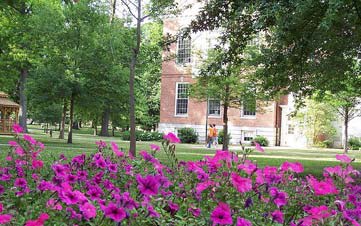

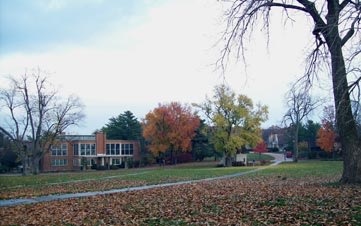
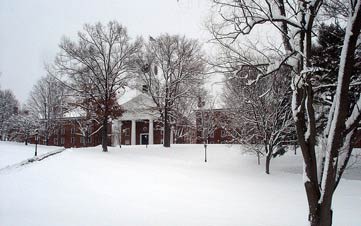
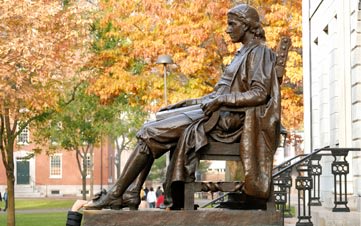
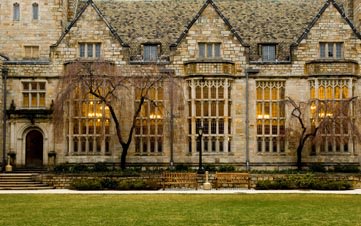
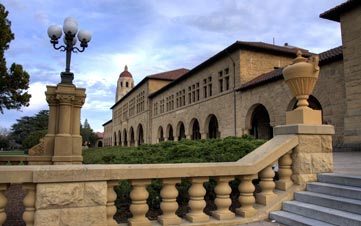
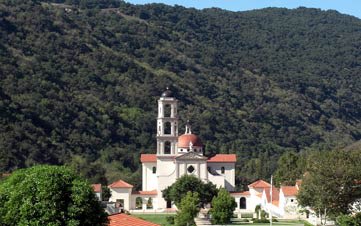
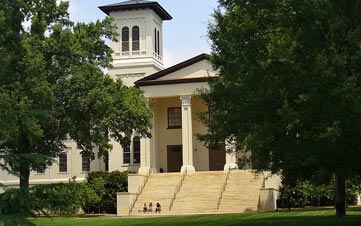
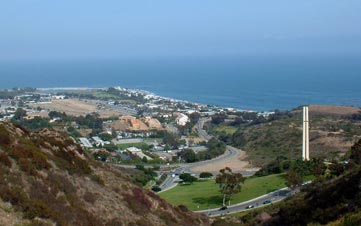




No comments:
Post a Comment